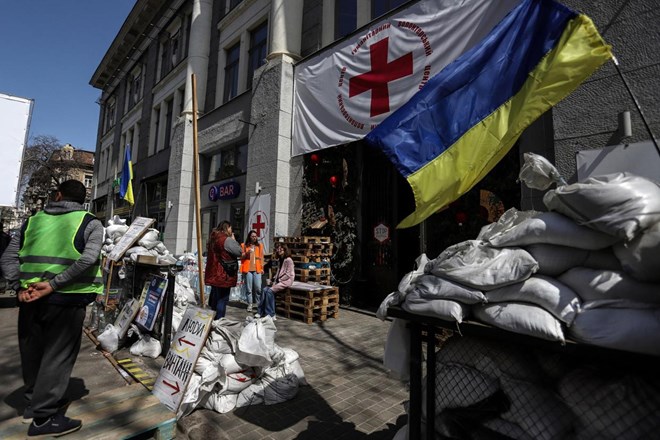Independent.ie
Sarah Newey
Sunday May 22, 2022

By the time Fahima had scraped together $10 (€9.40) for a lift to the health clinic, her youngest son was wasting away. At 16 months old, Bilar weighed just 10 pounds when he was admitted to the whitewashed paediatric ward — less than half the average for a young boy his age.
“His whole demeanour has changed,” said Fahima, not her real name, in Somaliland, an autonomous region in northern Somalia.
“He was friendly and loved to play. Now, you can see, he has nothing left.”
“We are forced to buy less because of the increased cost. I’m struggling to secure enough food for my children.”
The consequences could have been deadly for Bilar. He is now receiving treatment for severe malnutrition — but many children have fared worse.
The pair are among 15 million people experiencing acute hunger or starvation across the Horn of Africa amid a food crisis caused by the war in Ukraine and a major drought.
According to estimates from Save the Children and Oxfam, one child is dying every 48 seconds in the region.
Somalia is facing some of the worst of it — 81,000 people are already living in “pockets” of famine and the United Nations has warned that 350,000 children in the country will die by the summer without urgent action.
“The situation is becoming worse by the day,” says Mohamud Mohamed Hassan, director of Save the Children Somalia.
“The war in Ukraine has dealt a blow to what was already a perilous situation for families and children... The result is inflated market prices and unaffordable food and fuel prices.”
The Horn of Africa is heavily dependent on imports of grain and sunflower oil — vital basic foodstuffs that are stuck in Ukraine because of a Russian blockade of the Black Sea port of Odesa.
The Russian army has also been accused of destroying equipment and stealing grain in Ukraine.
Russia and Ukraine account for around a quarter of the world’s wheat exports and the West fears Putin is trying to weaponise food supplies, with 25 million of tons of grain currently rotting in silos because to Moscow’s naval blockade.
In Somalia some 90pc of wheat imports usually come from Russia and Ukraine. Alongside Ethiopia and Kenya, the country looks set to be “hardest hit by shocks of the global wheat trade”, the World Food Programme (WFP) has warned.
“We have seen food prices rise this year in a dramatic way that we did not expect,” says Abdul Risaac, the mayor of Burao — a small city in the heart of Somaliland, a de facto state considered internationally as part of Somalia. “In some places food prices have increased five times compared to before the conflict in Ukraine,” he adds.
“It’s a very unfortunate situation that we are in.”
The spiralling food costs come on top of the worst drought in 40 years and pandemic-related economic disruption.
It’s a situation that looks set to deteriorate, with few signs of an end to soaring global prices.
By some estimates, the world has just 10 weeks worth of stockpiled wheat left, while India — the second-largest producer — has suspended exports amid concerns that extreme temperatures could wipe out up to 15pc of this year’s harvest.
Meanwhile, the Horn of Africa’s rainy season, which runs between April and June, has brought with it little rain, raising a very real prospect of a fourth consecutive failed season.
Without intervention, the WFP estimates that a further five million people will “march towards starvation” by the end of the year, taking the total facing food insecurity to 20 million.
“It’s a really bad situation,” says Lizzie Walker, head of the British Government’s Office in Hargeisa, the capital of Somaliland. “It’s looking worse than [the famine in] 2011.”
But although a rapid response during the 2016-17 drought in Somalia averted a famine on the scale of 2011 — when 260,000 people died — it looks unlikely that assistance will match the scale of the current crisis.
For Fahima, sitting cross-legged on the health clinic’s tiled floor, there’s little to do bar pray.
“Of course I am worried. I feel helpless... I have no stable way of getting food,” she says. “But, God willing, we’ll survive.”
© Telegraph Media Group Ltd (2022)